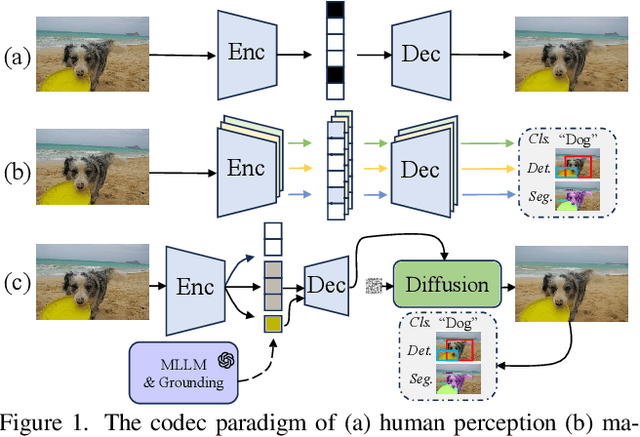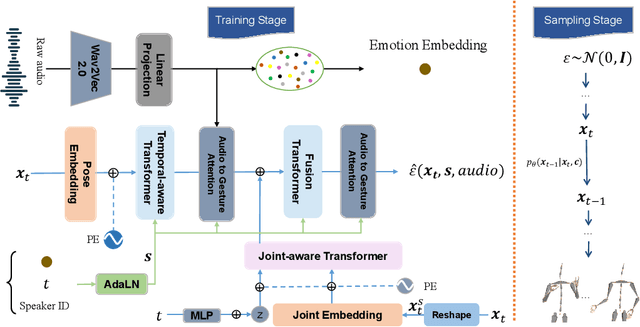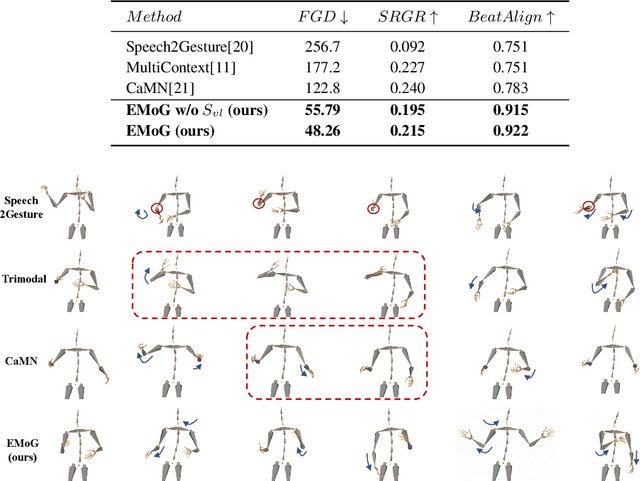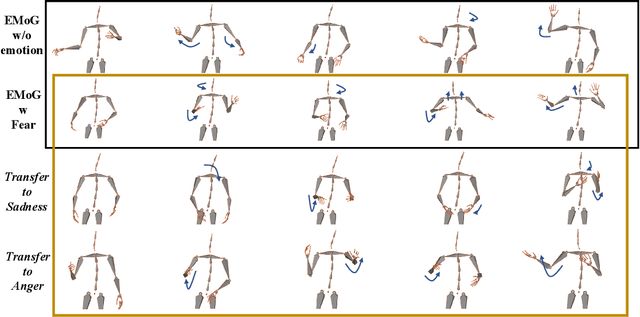Jinming Liu
Semantics Disentanglement and Composition for Versatile Codec toward both Human-eye Perception and Machine Vision Task
Dec 24, 2024



Abstract:While learned image compression methods have achieved impressive results in either human visual perception or machine vision tasks, they are often specialized only for one domain. This drawback limits their versatility and generalizability across scenarios and also requires retraining to adapt to new applications-a process that adds significant complexity and cost in real-world scenarios. In this study, we introduce an innovative semantics DISentanglement and COmposition VERsatile codec (DISCOVER) to simultaneously enhance human-eye perception and machine vision tasks. The approach derives a set of labels per task through multimodal large models, which grounding models are then applied for precise localization, enabling a comprehensive understanding and disentanglement of image components at the encoder side. At the decoding stage, a comprehensive reconstruction of the image is achieved by leveraging these encoded components alongside priors from generative models, thereby optimizing performance for both human visual perception and machine-based analytical tasks. Extensive experimental evaluations substantiate the robustness and effectiveness of DISCOVER, demonstrating superior performance in fulfilling the dual objectives of human and machine vision requirements.
Tell Codec What Worth Compressing: Semantically Disentangled Image Coding for Machine with LMMs
Aug 16, 2024



Abstract:We present a new image compression paradigm to achieve ``intelligently coding for machine'' by cleverly leveraging the common sense of Large Multimodal Models (LMMs). We are motivated by the evidence that large language/multimodal models are powerful general-purpose semantics predictors for understanding the real world. Different from traditional image compression typically optimized for human eyes, the image coding for machines (ICM) framework we focus on requires the compressed bitstream to more comply with different downstream intelligent analysis tasks. To this end, we employ LMM to \textcolor{red}{tell codec what to compress}: 1) first utilize the powerful semantic understanding capability of LMMs w.r.t object grounding, identification, and importance ranking via prompts, to disentangle image content before compression, 2) and then based on these semantic priors we accordingly encode and transmit objects of the image in order with a structured bitstream. In this way, diverse vision benchmarks including image classification, object detection, instance segmentation, etc., can be well supported with such a semantically structured bitstream. We dub our method ``\textit{SDComp}'' for ``\textit{S}emantically \textit{D}isentangled \textit{Comp}ression'', and compare it with state-of-the-art codecs on a wide variety of different vision tasks. SDComp codec leads to more flexible reconstruction results, promised decoded visual quality, and a more generic/satisfactory intelligent task-supporting ability.
Rate-Distortion-Cognition Controllable Versatile Neural Image Compression
Jul 16, 2024Abstract:Recently, the field of Image Coding for Machines (ICM) has garnered heightened interest and significant advances thanks to the rapid progress of learning-based techniques for image compression and analysis. Previous studies often require training separate codecs to support various bitrate levels, machine tasks, and networks, thus lacking both flexibility and practicality. To address these challenges, we propose a rate-distortion-cognition controllable versatile image compression, which method allows the users to adjust the bitrate (i.e., Rate), image reconstruction quality (i.e., Distortion), and machine task accuracy (i.e., Cognition) with a single neural model, achieving ultra-controllability. Specifically, we first introduce a cognition-oriented loss in the primary compression branch to train a codec for diverse machine tasks. This branch attains variable bitrate by regulating quantization degree through the latent code channels. To further enhance the quality of the reconstructed images, we employ an auxiliary branch to supplement residual information with a scalable bitstream. Ultimately, two branches use a `$\beta x + (1 - \beta) y$' interpolation strategy to achieve a balanced cognition-distortion trade-off. Extensive experiments demonstrate that our method yields satisfactory ICM performance and flexible Rate-Distortion-Cognition controlling.
Closed-Loop Unsupervised Representation Disentanglement with $β$-VAE Distillation and Diffusion Probabilistic Feedback
Feb 04, 2024Abstract:Representation disentanglement may help AI fundamentally understand the real world and thus benefit both discrimination and generation tasks. It currently has at least three unresolved core issues: (i) heavy reliance on label annotation and synthetic data -- causing poor generalization on natural scenarios; (ii) heuristic/hand-craft disentangling constraints make it hard to adaptively achieve an optimal training trade-off; (iii) lacking reasonable evaluation metric, especially for the real label-free data. To address these challenges, we propose a \textbf{C}losed-\textbf{L}oop unsupervised representation \textbf{Dis}entanglement approach dubbed \textbf{CL-Dis}. Specifically, we use diffusion-based autoencoder (Diff-AE) as a backbone while resorting to $\beta$-VAE as a co-pilot to extract semantically disentangled representations. The strong generation ability of diffusion model and the good disentanglement ability of VAE model are complementary. To strengthen disentangling, VAE-latent distillation and diffusion-wise feedback are interconnected in a closed-loop system for a further mutual promotion. Then, a self-supervised \textbf{Navigation} strategy is introduced to identify interpretable semantic directions in the disentangled latent space. Finally, a new metric based on content tracking is designed to evaluate the disentanglement effect. Experiments demonstrate the superiority of CL-Dis on applications like real image manipulation and visual analysis.
One at A Time: Multi-step Volumetric Probability Distribution Diffusion for Depth Estimation
Jul 07, 2023Abstract:Recent works have explored the fundamental role of depth estimation in multi-view stereo (MVS) and semantic scene completion (SSC). They generally construct 3D cost volumes to explore geometric correspondence in depth, and estimate such volumes in a single step relying directly on the ground truth approximation. However, such problem cannot be thoroughly handled in one step due to complex empirical distributions, especially in challenging regions like occlusions, reflections, etc. In this paper, we formulate the depth estimation task as a multi-step distribution approximation process, and introduce a new paradigm of modeling the Volumetric Probability Distribution progressively (step-by-step) following a Markov chain with Diffusion models (VPDD). Specifically, to constrain the multi-step generation of volume in VPDD, we construct a meta volume guidance and a confidence-aware contextual guidance as conditional geometry priors to facilitate the distribution approximation. For the sampling process, we further investigate an online filtering strategy to maintain consistency in volume representations for stable training. Experiments demonstrate that our plug-and-play VPDD outperforms the state-of-the-arts for tasks of MVS and SSC, and can also be easily extended to different baselines to get improvement. It is worth mentioning that we are the first camera-based work that surpasses LiDAR-based methods on the SemanticKITTI dataset.
EMoG: Synthesizing Emotive Co-speech 3D Gesture with Diffusion Model
Jun 20, 2023



Abstract:Although previous co-speech gesture generation methods are able to synthesize motions in line with speech content, it is still not enough to handle diverse and complicated motion distribution. The key challenges are: 1) the one-to-many nature between the speech content and gestures; 2) the correlation modeling between the body joints. In this paper, we present a novel framework (EMoG) to tackle the above challenges with denoising diffusion models: 1) To alleviate the one-to-many problem, we incorporate emotion clues to guide the generation process, making the generation much easier; 2) To model joint correlation, we propose to decompose the difficult gesture generation into two sub-problems: joint correlation modeling and temporal dynamics modeling. Then, the two sub-problems are explicitly tackled with our proposed Joint Correlation-aware transFormer (JCFormer). Through extensive evaluations, we demonstrate that our proposed method surpasses previous state-of-the-art approaches, offering substantial superiority in gesture synthesis.
Prompt-ICM: A Unified Framework towards Image Coding for Machines with Task-driven Prompts
May 04, 2023Abstract:Image coding for machines (ICM) aims to compress images to support downstream AI analysis instead of human perception. For ICM, developing a unified codec to reduce information redundancy while empowering the compressed features to support various vision tasks is very important, which inevitably faces two core challenges: 1) How should the compression strategy be adjusted based on the downstream tasks? 2) How to well adapt the compressed features to different downstream tasks? Inspired by recent advances in transferring large-scale pre-trained models to downstream tasks via prompting, in this work, we explore a new ICM framework, termed Prompt-ICM. To address both challenges by carefully learning task-driven prompts to coordinate well the compression process and downstream analysis. Specifically, our method is composed of two core designs: a) compression prompts, which are implemented as importance maps predicted by an information selector, and used to achieve different content-weighted bit allocations during compression according to different downstream tasks; b) task-adaptive prompts, which are instantiated as a few learnable parameters specifically for tuning compressed features for the specific intelligent task. Extensive experiments demonstrate that with a single feature codec and a few extra parameters, our proposed framework could efficiently support different kinds of intelligent tasks with much higher coding efficiency.
Inpaint Anything: Segment Anything Meets Image Inpainting
Apr 13, 2023


Abstract:Modern image inpainting systems, despite the significant progress, often struggle with mask selection and holes filling. Based on Segment-Anything Model (SAM), we make the first attempt to the mask-free image inpainting and propose a new paradigm of ``clicking and filling'', which is named as Inpaint Anything (IA). The core idea behind IA is to combine the strengths of different models in order to build a very powerful and user-friendly pipeline for solving inpainting-related problems. IA supports three main features: (i) Remove Anything: users could click on an object and IA will remove it and smooth the ``hole'' with the context; (ii) Fill Anything: after certain objects removal, users could provide text-based prompts to IA, and then it will fill the hole with the corresponding generative content via driving AIGC models like Stable Diffusion; (iii) Replace Anything: with IA, users have another option to retain the click-selected object and replace the remaining background with the newly generated scenes. We are also very willing to help everyone share and promote new projects based on our Inpaint Anything (IA). Our codes are available at https://github.com/geekyutao/Inpaint-Anything.
Learned Image Compression with Mixed Transformer-CNN Architectures
Mar 27, 2023



Abstract:Learned image compression (LIC) methods have exhibited promising progress and superior rate-distortion performance compared with classical image compression standards. Most existing LIC methods are Convolutional Neural Networks-based (CNN-based) or Transformer-based, which have different advantages. Exploiting both advantages is a point worth exploring, which has two challenges: 1) how to effectively fuse the two methods? 2) how to achieve higher performance with a suitable complexity? In this paper, we propose an efficient parallel Transformer-CNN Mixture (TCM) block with a controllable complexity to incorporate the local modeling ability of CNN and the non-local modeling ability of transformers to improve the overall architecture of image compression models. Besides, inspired by the recent progress of entropy estimation models and attention modules, we propose a channel-wise entropy model with parameter-efficient swin-transformer-based attention (SWAtten) modules by using channel squeezing. Experimental results demonstrate our proposed method achieves state-of-the-art rate-distortion performances on three different resolution datasets (i.e., Kodak, Tecnick, CLIC Professional Validation) compared to existing LIC methods. The code is at https://github.com/jmliu206/LIC_TCM.
Multistage Spatial Context Models for Learned Image Compression
Feb 18, 2023Abstract:Recent state-of-the-art Learned Image Compression methods feature spatial context models, achieving great rate-distortion improvements over hyperprior methods. However, the autoregressive context model requires serial decoding, limiting runtime performance. The Checkerboard context model allows parallel decoding at a cost of reduced RD performance. We present a series of multistage spatial context models allowing both fast decoding and better RD performance. We split the latent space into square patches and decode serially within each patch while different patches are decoded in parallel. The proposed method features a comparable decoding speed to Checkerboard while reaching the RD performance of Autoregressive and even also outperforming Autoregressive. Inside each patch, the decoding order must be carefully decided as a bad order negatively impacts performance; therefore, we also propose a decoding order optimization algorithm.
 Add to Chrome
Add to Chrome Add to Firefox
Add to Firefox Add to Edge
Add to Edge